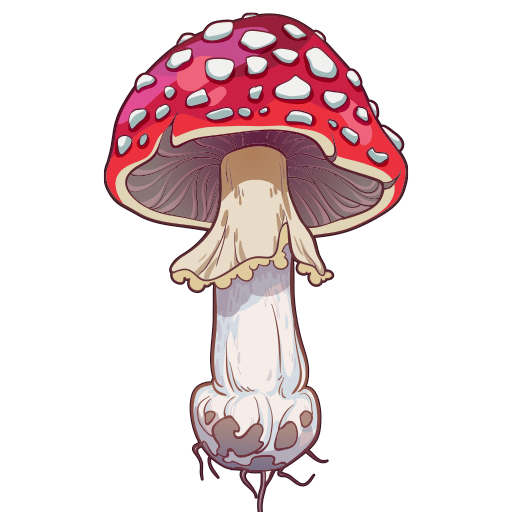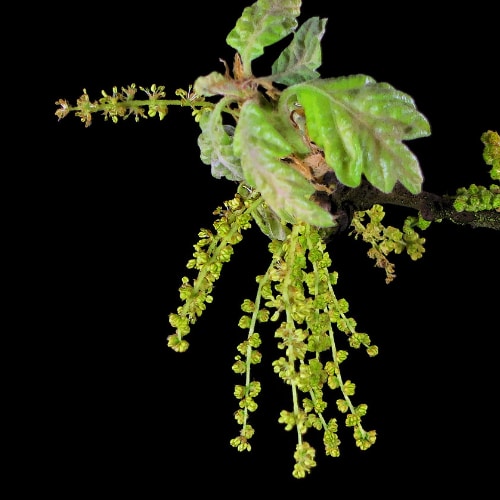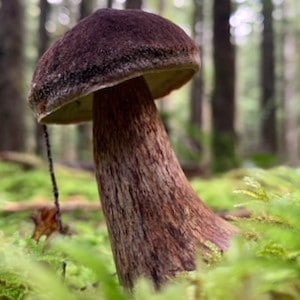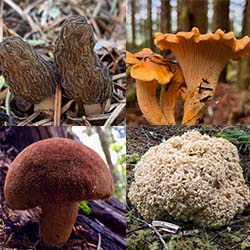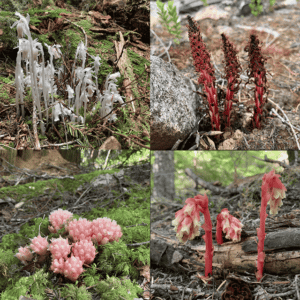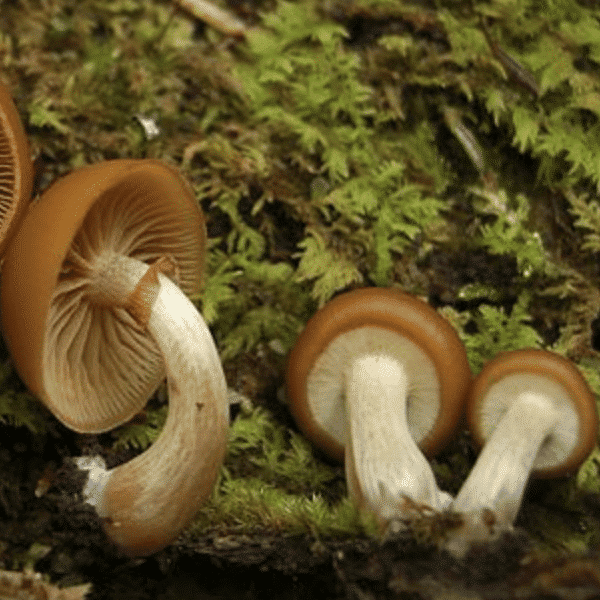Oregon Oak Quercus garryana
Oregon Oak trees are known by a few different names, including Oregon White Oak, and as Garry Oak in British Columbia, Canada. Oregon Oaks grow in a much larger area of the west coast than other oak species, but are becoming increasingly rare in the Pugent Sound area of Washington.
West of the cascades is where Oregon Oaks are most commonly found, favoring the maritime climate. They also are able to grow in warm, dry areas with infertile soil, but this environment stunts the growth. Similarly, they grow only as tall shrubs in rocky, wind exposed areas.
While Oregon Oaks are found often in rain sheltered areas, they are not very shade tolerant. They grow slower than many fir and other big leafed trees making them weak competitors. A characteristic that aids in their survival is that older oaks are somewhat fire resistant.
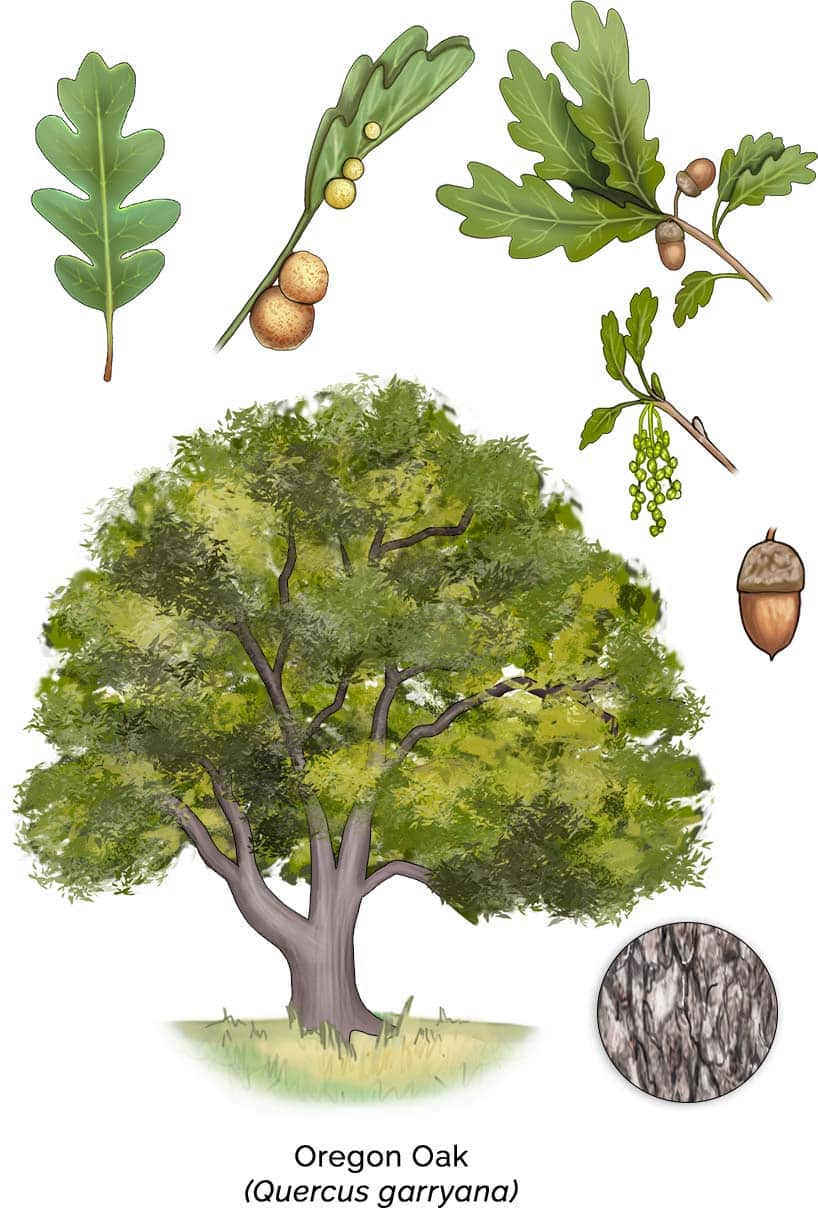
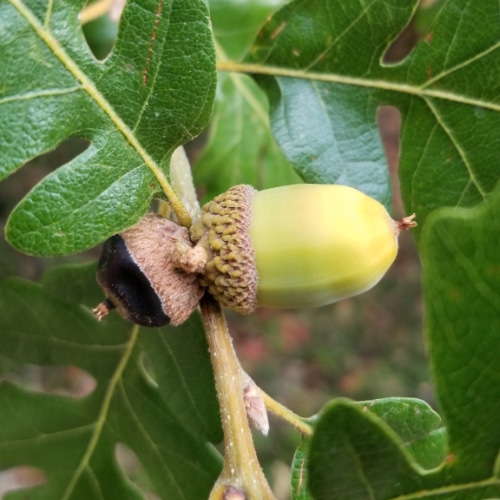
Fruit/Seeds
- Acorns grow to about 1 inch long
- Shallow, bowl like cap on top
- Heavy for their size
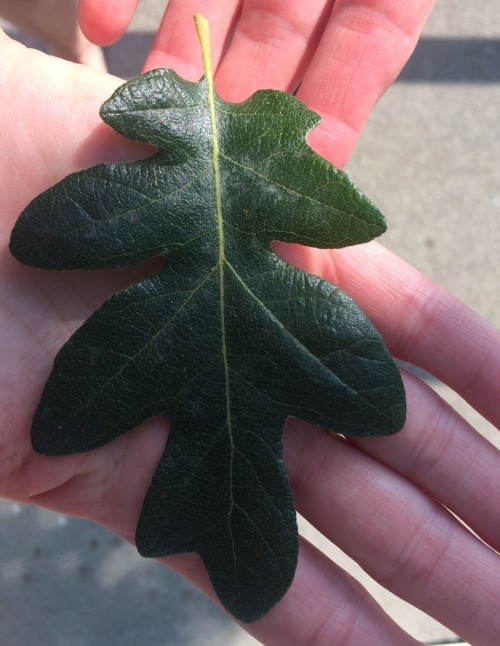
Leaves
- 3-6 inches long
- 2-4.5 inches wide
- 5-9 deep, round, irregular lobes
- Dark green and waxy on top
- Pale green with fine rust colored hairs on underside

Bark
- Gray to gray-brown
- Thin
- fissured
Did you know?
Oregon Oak acorns are a source of food for a wide variety of animals, but the declining population of these trees is affecting the population of certain species as well!
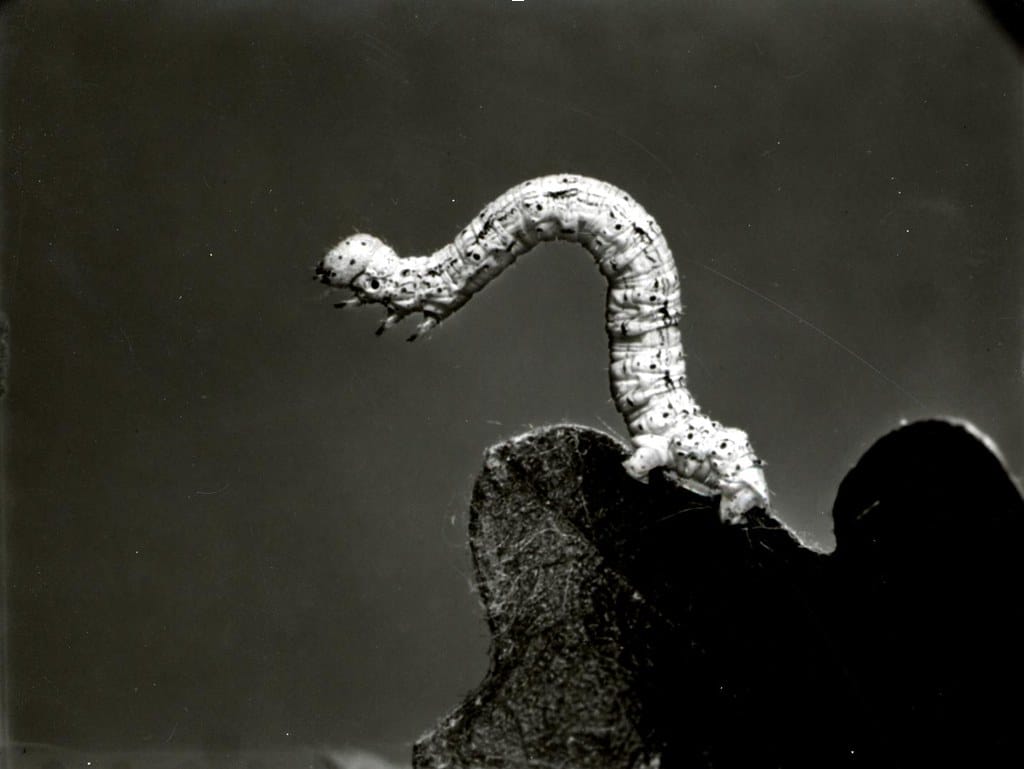

Where are the Oregon Oaks?
Public Domain: US Geological Survey
Mushrooms Associated with Oregon Oaks
Agaricus
Agaricus albolutescens
Agaricus augustus
Agaricus bisporus
Agaricus deardorffensis
Agaricus hondensis
Agaricus subrufescens
Agaricus xanthodermus
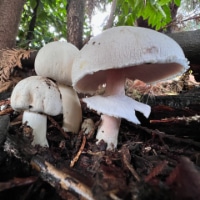
Amanita
Amanita calyptroderma
Amanita novinupta
Amanita protecta
Amanita velosa
Amanita vernicoccora
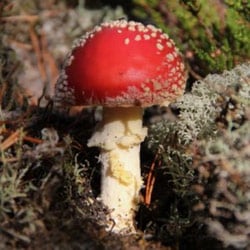
Armillaria ostoyae
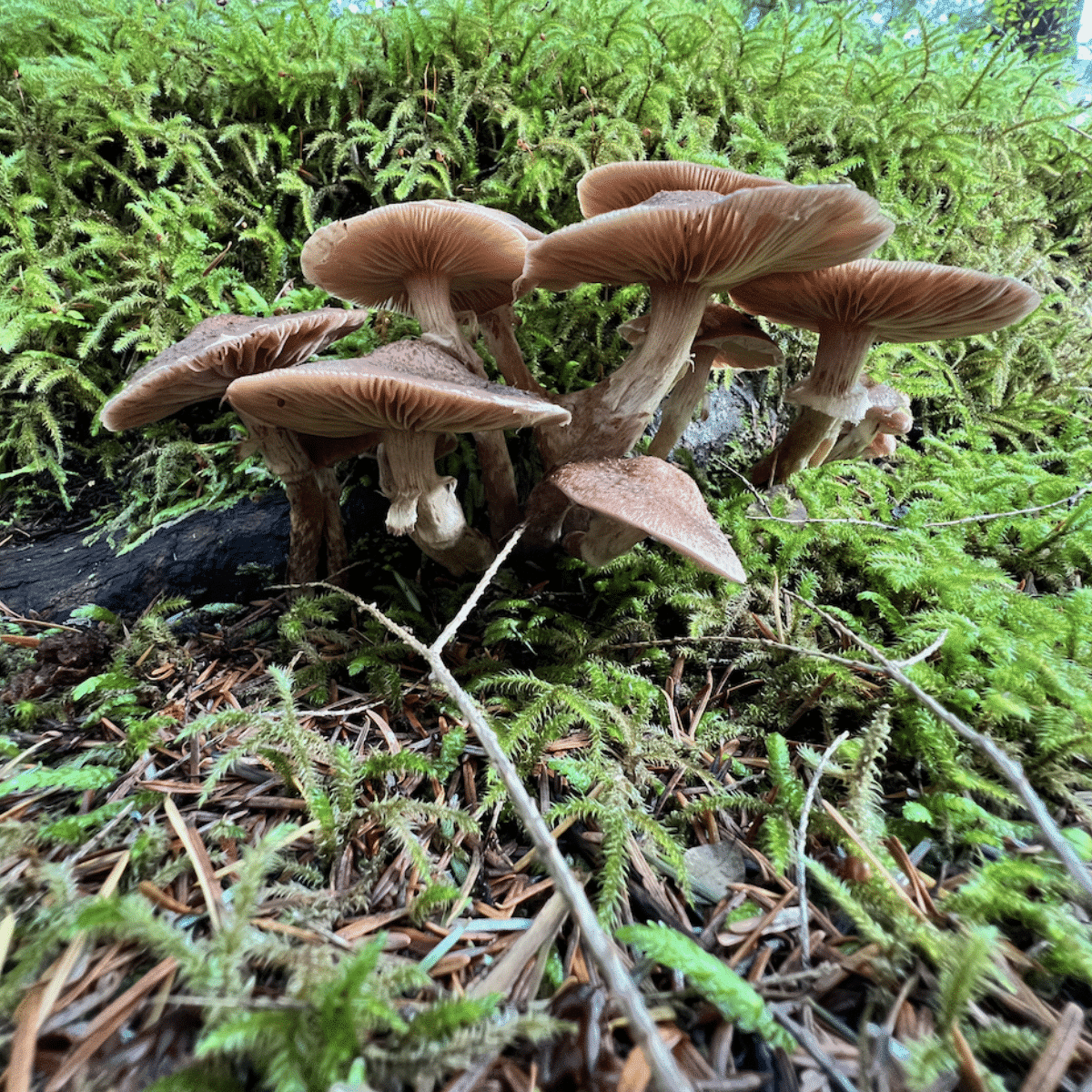
Caloboletus marshii

Calocera cornea
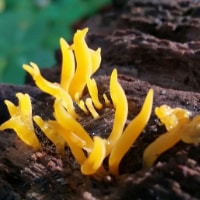
Cortinarius
Cortinarius albofragrans
Cortinarius californicus
Cortinarius calyptratus
Cortinarius cinnamomeoluteus
Cortinarius iodeoides
Cortinarius ponderosus
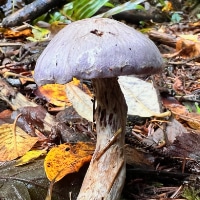
Craterellus calicornucopioide

Crepidotus epibryus
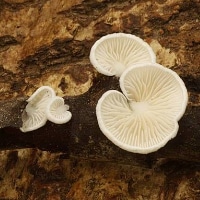
Daedalea quercina

Fistulina hepatica
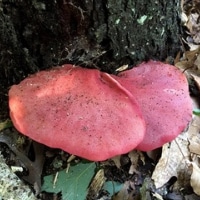
Fomitiporia robusta

Fomitopsis spraguei
Ganoderma polychromum
Grifola frondosa
Guepiniopsis buccina
Helvella
Helvella compressa
Helvella dryophila
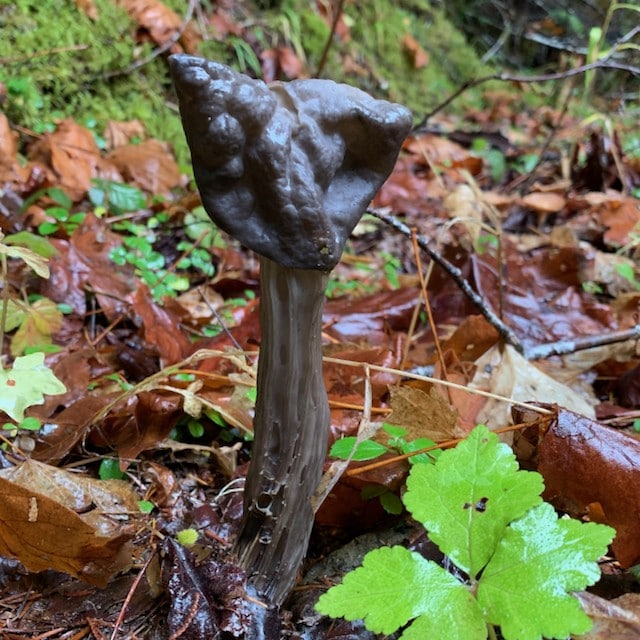
Hericium coralloides
Inonotus hispidus
Lactarius
Lactarius argillaceifolius
Lactarius rubidus
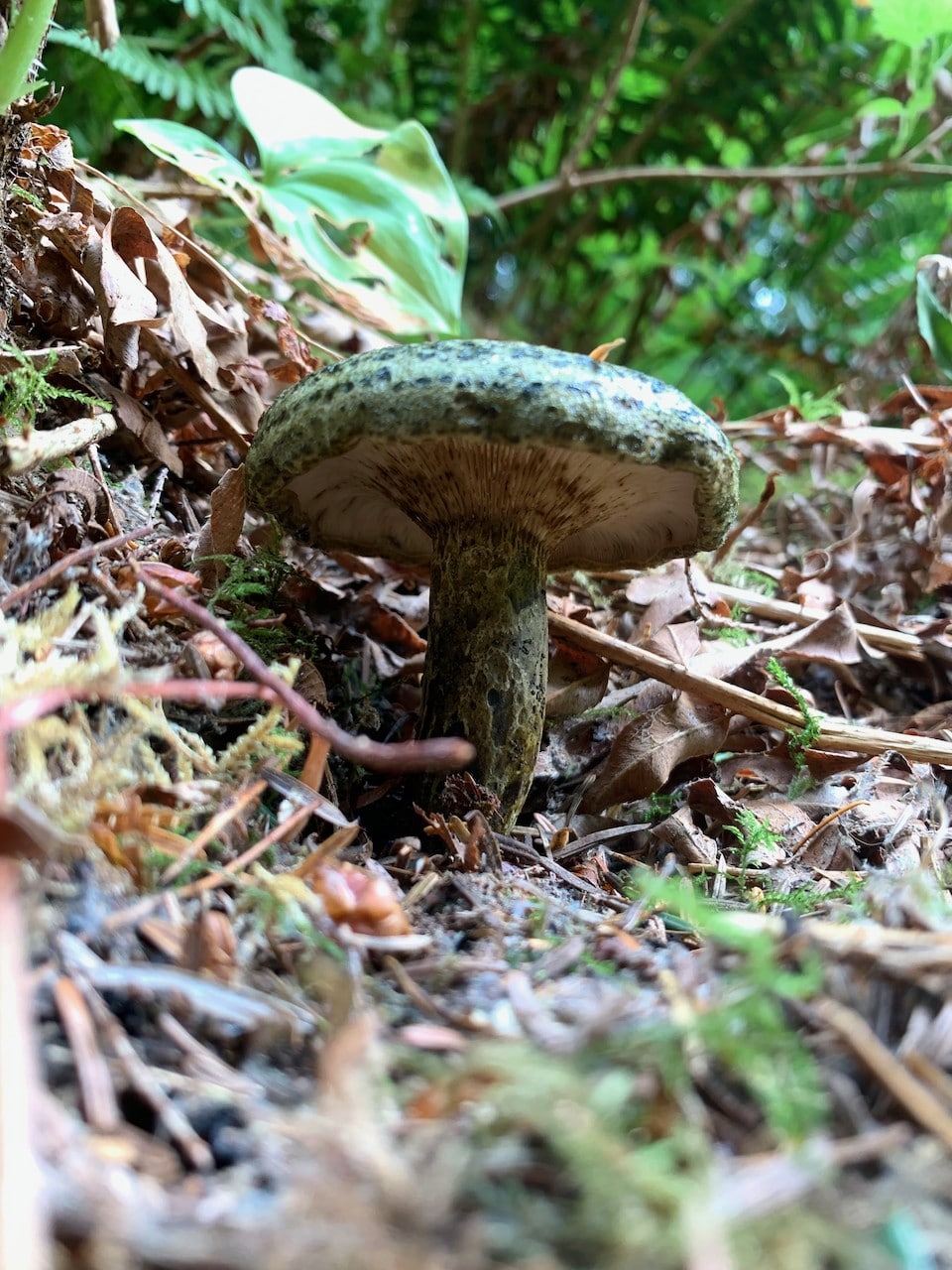
Laetiporus gilbertsonii
Lepiota castaneidisca
Leratiomyces squamosus

Leucopaxillusgentianeus

Marasmius epiphyllus
Morchella
Morchella brunnea
Morchella rufobrunnea
Morchella tridentina
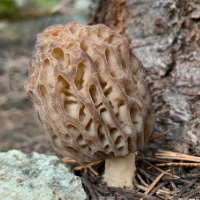
Mycena
Mycena abramsii
Mycena californiensis
Mycena pelianthina

Mycetinis copelandii
Myxarium atratum
Otidea onotica
Phellinus tremulae
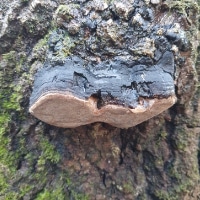
Pluteus petasatus

Psathyrella frustulenta
Pseudoinonotus dryadeus
Rubroboletus eastwoodiae
Russula
Russula cerolens
Russula parazurea
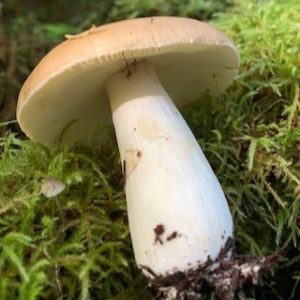
Thelephora anthocephala
Trametes gibbosa
Tremella encephala
Tricholoma dryophilum
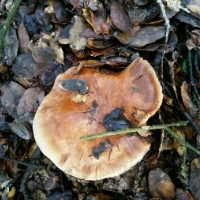
Tubaria punicea
Popular Pages
Boletes
A selection of Pacific Northwest boletes
Mycoheterotrophs
Plants that depend on fungi for food
Poisonous Mushrooms
Many edible mushrooms can be poisonous, and many poisonous mushrooms can be edible.
Trees
Learn where to find, and how to identify the most common trees in the Pacific Northwest
